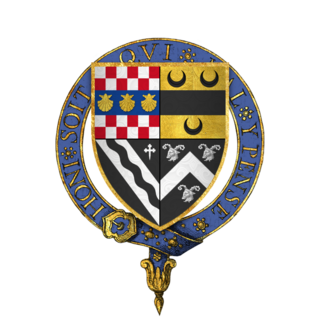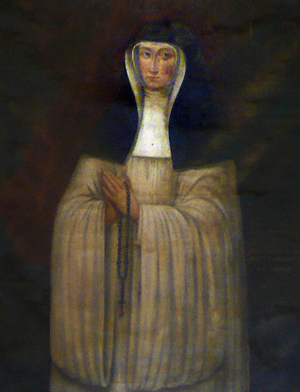
Thomas Howard, 3rd Duke of Norfolk, was a prominent English politician and nobleman of the Tudor era. He was an uncle of two of the wives of King Henry VIII, Anne Boleyn and Catherine Howard, both of whom were beheaded, and played a major role in the machinations affecting these royal marriages. After falling from favour in 1546, he was stripped of his dukedom and imprisoned in the Tower of London, avoiding execution when Henry VIII died on 28 January 1547.

Sir Everard Digby was a member of the group of provincial members of the English nobility who planned the failed Gunpowder Plot of 1605. Although he was raised in an Anglican household and married a Protestant, Digby and his wife were secretly received into the strictly illegal and underground Catholic Church in England by the Jesuit priest Fr. John Gerard. In the autumn of 1605, he made a Christian pilgrimage to the shrine of St Winefride's Well in Holywell, Wales. About this time, he met Robert Catesby, who was planning to blow up the House of Lords with gunpowder as an alleged act of tyrannicide and a decapitation strike against King James I. Catesby then planned to lead a popular uprising aimed at regime change, through which a Catholic monarch would be placed upon the English throne.

Robert Rochester was an English Catholic and Comptroller of the Household and a member of the Privy Council in the reign of Mary I.

Jane Neville, Countess of Westmorland, was an English noblewoman.

Edward Arden was an English nobleman and head of the Arden family, who became a Catholic martyr.
Henry Nevill, de facto 9th Baron Bergavenny was an English iron founder, soldier and politician who sat in the House of Commons at various times between 1601 and 1622 when he inherited the Baron Bergavenny peerage.

Sir Thomas Gascoigne, 2nd Baronet (1596–1686) was an English Baronet, a prominent member of the Gascoigne family and a survivor of the Popish Plot, or as it was locally known "the Barnbow Plot".

Sir Robert Throckmorton, KG, of Coughton Court in Warwickshire, was a Member of Parliament and a distinguished English courtier. His public career was impeded by remaining a Roman Catholic.
John Somerville (1560–1583) was the son of John Somerville, of Edstone, Warwickshire, and Elizabeth Corbett of Lee, Shropshire.

Sir Richard Guildford KG was an English courtier, administrator, politician and military leader who held important positions under King Henry VII.
Anne Vaux was a wealthy Catholic recusant.

Mary Arundell, Countess of Arundel, was an English courtier. She was the only child of Sir John Arundell of Lanherne, Cornwall, by his second wife, Katherine Grenville. She was a gentlewoman at court in the reign of King Henry VIII, serving two of Henry VIII's Queens, and the King's daughter, Princess Mary. She was traditionally believed to have been "the erudite Mary Arundell", the supposed translator of verses now known to have been the work of her stepdaughter, Mary FitzAlan, later the first wife of Thomas Howard, 4th Duke of Norfolk.
John Villiers was an English courtier from the Villiers family. The eldest son of Sir George Villiers and Mary Beaumont, later Countess of Buckingham, he was the brother of King James I's favourite, George Villiers, 1st Duke of Buckingham.
Anne Worsley religious name Anne of the Ascension was an English catholic nun. She was the founding prioress of the English Carmelite convent in Antwerp.
Mary Thimelby was an English prioress of St Monica at Leuven.

Margaret Throckmorton later Magdelan was an English prioress of St Monica's convent in Leuven. It was one of seven religious communities on the continent of English nuns escaping discrimination in England.

Margaret Clement was an English prioress of St Ursula's convent in Leuven.
Mary Lovel born Jane Roper and aka Mary Roper and Lady Lovel was the founder of the English Carmelite convent in Antwerp.
Anne Neville born Mary Neville was an English Roman Catholic nun and royal debt collector who became the abbess of Pontoise near Paris.
Sir George Shirley (1559-1622) was an English landowner and the second man to be created a baronet. He was the son of John (1535-70), eldest son of Francis Shirley (1515-71) of Staunton Harold, and Jane, only daughter and heir of Thomas Lovett of Astwell, Northants. The family inclined to Roman Catholicism and one of his sisters, Elizabeth Shirley, became a nun, but generally they maintained sufficient conformity to avoid the penalties for recusancy.











